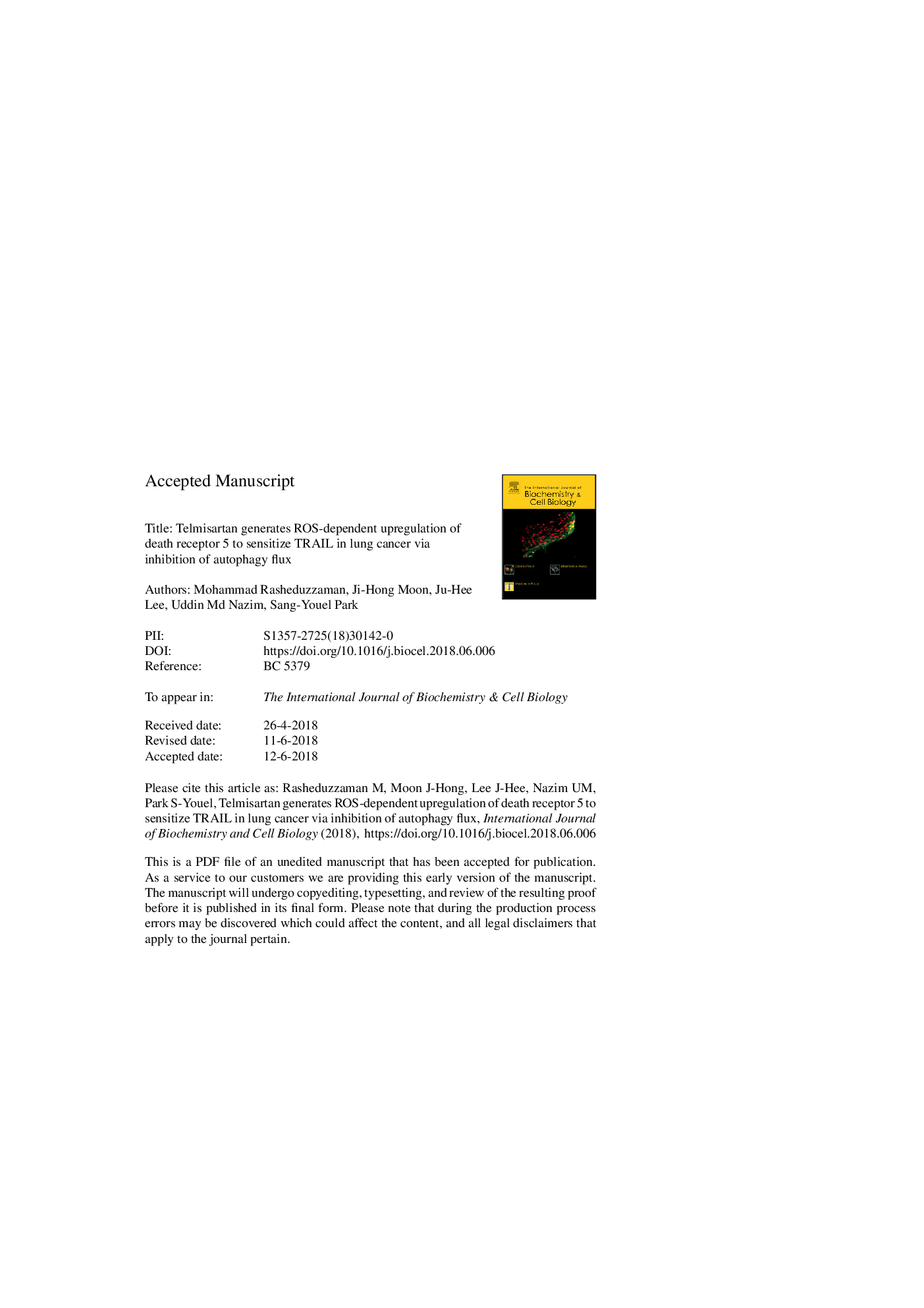| کد مقاله | کد نشریه | سال انتشار | مقاله انگلیسی | نسخه تمام متن |
|---|---|---|---|---|
| 8321886 | 1539839 | 2018 | 39 صفحه PDF | دانلود رایگان |
عنوان انگلیسی مقاله ISI
Telmisartan generates ROS-dependent upregulation of death receptor 5 to sensitize TRAIL in lung cancer via inhibition of autophagy flux
دانلود مقاله + سفارش ترجمه
دانلود مقاله ISI انگلیسی
رایگان برای ایرانیان
کلمات کلیدی
موضوعات مرتبط
علوم زیستی و بیوفناوری
بیوشیمی، ژنتیک و زیست شناسی مولکولی
زیست شیمی
پیش نمایش صفحه اول مقاله

چکیده انگلیسی
Telmisartan broadly used for the treatment of hypertension that is also known for its anticancer properties. TRAIL has the potential to kill tumor cells with minimal toxicity in normal cells by binding to death receptors, DR4 and DR5. Unfortunately, these TRAIL-death receptors have failed as most human cancers are resistant to TRAIL-mediated apoptosis. In this study, we evaluated telmisartan as a novel TRAIL-DR5-targeting agent with the aim of rendering TRAIL-based cancer therapies more active. Herein, we demonstrated that telmisartan could sensitize TRAIL and enhance NSCLC tumor cell death. The molecular mechanism includes the blocking of AMPK phosphorylation causes inhibition of autophagy flux by telmisartan resulting in ROS generation leading to death receptor (DR5) upregulation and subsequent activation of the caspase cascade by TRAIL treatment. Furthermore, using chloroquine and siATG5 significantly enhances ROS production and application of the ROS scavenger N-acetyl-cysteine (NAC) rescues the cells undergoing apoptosis by abrogating the expression of DR5 and finally the caspase cascade. Additionally, NAC treatment also maintains autophagy flux and makes the cells unresponsive to TRAIL. In summary, telmisartan in combination with TRAIL exhibits enhanced cytotoxic capacity toward lung cancer cells, thereby providing the potential for effective and novel therapeutic approaches to treat lung cancer.
ناشر
Database: Elsevier - ScienceDirect (ساینس دایرکت)
Journal: The International Journal of Biochemistry & Cell Biology - Volume 102, September 2018, Pages 20-30
Journal: The International Journal of Biochemistry & Cell Biology - Volume 102, September 2018, Pages 20-30
نویسندگان
Mohammad Rasheduzzaman, Ji-Hong Moon, Ju-Hee Lee, Uddin Md Nazim, Sang-Youel Park,